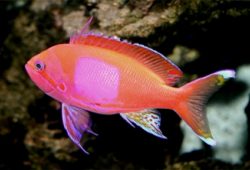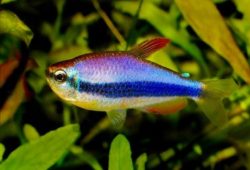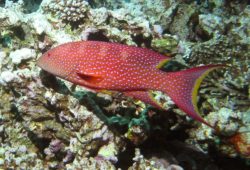Cleaner Shrimp and Wrasses for Saltwater Aquaria
In the article it is spoken about Cleaner Shrimp and Wrasses for Saltwater Aquaria. Cleaner shrimp and wrasses help prevent outbreaks of infestations such as marine ich in the tropical saltwater aquarium, and for most, cleaner shrimp are the best choice.

Many tropical saltwater aquarium keepers seek out animals that are both beautiful and beneficial to the aquarium. One of the most behaviorally interesting groups of animals that can be both beautiful and beneficial are those animals marine aquarists refer to as cleaner animals such as cleaner wrasses and cleaner shrimp. Both cleaner wrasses and cleaner shrimp have their pros and cons, and any marine aquarists must consider these before deciding to add one to his or her aquarium.
Contents
Saltwater Aquarium Cleaner Animals
Cleaner animals form symbiotic relationships with fishes in the saltwater aquarium. A symbiotic relationship is a relationship between two different species where at least one of the animals benefits. If both animals benefit from the relationship, it is said to be a mutualistic relationship. If only one animal benefits but the other is not harmed, then the relationship is said to be commensal. If, on the other hand, one of the animals in the relationship benefits at the other’s expense, the relationship is said to be parasitic.
When discussing cleaner animals such as cleaner wrasses and cleaner shrimp, the aquarist is usually talking about either a symbiotic relationship that is either mutualistic or commensal. In this relationship, the cleaner wrasse or cleaner shrimp “cleans” parasites (such as those that cause “marine ich”) and dead skin off fishes, hence providing benefit to the fishes. The cleaner animal itself benefits to a lesser or greater degree depending largely on how much of its nutritional needs are gained through cleaning.
Facultative or Obligate Cleaners
Cleaner animals may be broken down into two main categories:
- Facultative
- Obligate
Facultative cleaner animals will clean parasites and dead skin off of fishes with which they have a symbiotic relationship, but they will also feed on other sources (e.g., detritus, commercially prepared foods). Obligate cleaner animals, on the other hand, meet most of their nutrition needs through the process of cleaning. While obligate cleaners may feed on other foods, they often require a sufficient number of fishes to clean if they are to remain healthy.
Cleaner Wrasses
Overall, cleaner wrasses are a poor choice in most saltwater aquaria because they are obligate cleaners, and many will perish in most home aquarium settings.
One advantage to having cleaner wrasses in a very large system is that a cleaner wrasse will typically approach and clean larger fish than a cleaner shrimp. In addition, cleaner wrasses are more efficient cleaners than cleaner shrimp, but this too often leads to their demise in a small system. Once they have cleaned all the fishes in the system, they often starve to death or die from malnutrition.
The most common cleaner wrasse frequently seen in the North American marine aquarium hobby is the blue cleaner wrasse (Labroides dimidiatus). There are other hardier fishes that will perform cleaning duties, such as the neon goby.
Cleaner Shrimp
Cleaner shrimp, unlike cleaner wrasses, are facultative cleaners, and this is a huge advantage for most home aquarists. The cleaner shrimp will advertise its services to fishes in the system by setting up a cleaning station, but the shrimp will also feed on detritus and other foods. This one major advantage can also be a drawback, however, as it is not uncommon for a cleaner shrimp to stop performing cleaning functions in the aquarium, as it can meet all of its nutritional needs without cleaning.
There are several cleaner shrimp to consider, but the most widely available cleaner shrimp is the scarlet cleaner shrimp (Lysmata amboinensis). One scarlet cleaner shrimp per 75 gallons is a good rule of thumb. In addition to the scarlet cleaner shrimp, there are many other symbiotic shrimp that the saltwater aquarist can keep in his or her aquarium.



